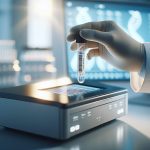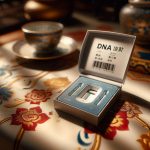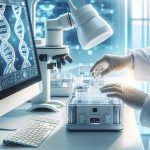Over the past quarter-century, BioDiscovery, Inc. has carved out its niche in the biotech world by crafting cutting-edge software for both scientific research and clinical uses. The company’s journey to success, as shared by founder Soheil Shams, is closely intertwined with the fast-paced evolution of genomics, showcasing their significant role in this field’s growth.
The origin and development of the company: What inspired it and its growth journey
I began my journey in the field of computer engineering, diving deep into the realms of artificial intelligence (AI) and machine learning. This foundation built a strong base for my career, which took an intriguing turn early on. The world of DNA caught my attention after attending a course led by Mike Waterman, a trailblazer in bioinformatics. His teachings shed light on the power of combining computing with biological sciences through DNA and RNA sequence alignment.
Fueled by this newfound fascination, I co-founded BioDiscovery in 1997. Entering the bioinformatics industry during its nascent stages posed significant challenges but offered even greater opportunities for learning and growth. Over the years, we’ve witnessed and adapted to the evolution of genomics technology, from crafting our initial microarrays to leveraging commercial arrays and embracing Next-generation sequencing technologies.
Our journey has been marked by continuous improvement and success, thanks in part to our commitment to harnessing our extensive knowledge for enhancing the utility of our software solutions within genomics laboratories. Through all these experiences, it’s clear that merging computational power with biological insights not only opens up new avenues for scientific advancement but also underscores the importance of interdisciplinary approaches in unraveling life’s complexities.
What do we know about the technology from BioDiscovery?
Exploring the vast landscape of the human genome, our focus has been keenly pointed towards a phenomenon known as Copy Number Variation (CNVs). This intriguing occurrence involves either an addition or loss of DNA fragments. A well-known example is Trisomy 21, more commonly recognized as Down syndrome, characterized by an additional chromosome 21. CNVs can vary significantly in size, from large segments like that seen in Trisomy 21 to minuscule portions.
Our technological advancements have expanded to detect even tinier alterations at the base level, termed sequence variants. Besides these two areas, the field of genomics is buzzing with research into DNA methylation and structural variants. The latter category encompasses any DNA pieces that have veered off their original path – through translocations, insertions, or deletions.
The ambitious goal we’ve set for ourselves is to amalgamate data on structural variants, sequence variants, CNVs, and methylation to construct a comprehensive genomic profile for each patient.
A laboratory situated in Heidelberg, Germany stands out for its pioneering tool based on DNA methylation that classifies brain tumors with groundbreaking precision. However, a holistic integration combining methylation along with copy number changes and both sequence and structural variations remains unachieved in current scientific endeavors. Striving towards this integration represents the frontier of genomic research we’re eager to explore.
Who are your usual customers?
Over the years, our clientele has undergone a significant transformation. Initially, our focus was primarily on serving research-oriented entities. A large portion of our early customers were in the pharmaceutical sector and research institutions focusing on critical areas like cancer studies. Institutions such as NCI and MD Anderson became notable users of our Nexus Copy Number software.
However, the last decade has marked a shift in our customer base towards clinical genetic testing laboratories. These new clients have adopted NxClinical for their diagnostic needs. Presently, we find ourselves at an equilibrium, with half of our clients rooted in research and the other half dedicated to clinical applications.
This evolution reflects not just changes within our company but also highlights broader shifts in industry demands and technological advancements over time.
What problems does BioDiscovery help its customers tackle?

In the realm of genomic laboratories, sophisticated technology is utilized to delve into and decipher our genetic blueprint. These high-tech tools, such as DNA microarrays and next-gen sequencing devices, churn out vast quantities of digital data representing the intricate details of the genome. The challenge lies in interpreting this deluge of information to glean meaningful insights.
For instance, scientists and clinicians are keen on identifying patterns or anomalies within certain groups, like pinpointing specific genomic variations common among individuals with breast cancer. They aim to distinguish how genetic changes correlate with different stages of tumor progression from less severe (grade 1) to more aggressive forms (grade 4). This knowledge not only advances our understanding but also guides treatment strategies.
The clinical utility of this data takes a significant leap forward with specialized software designed for data interpretation. This software bridges the gap between raw data output by genomic instruments and actionable medical insights. Clinicians can then craft detailed reports on a patient’s condition based on these insights, leading to informed decisions regarding treatment options.
Take, for example, a case involving a young girl facing developmental challenges without an apparent cause. Traditional methods failed to uncover any clues until analyzing her DNA through advanced interpretive software revealed a minor gene deletion responsible for her symptoms. While no medication could reverse her condition, understanding its root cause brought clarity and closure to her family.
Moreover, in oncology cases where genetic aberrations play a crucial role in disease progression, this approach proves invaluable. Identifying mutations like those in the KRAS gene enables clinicians to prescribe targeted therapies specifically designed for those alterations—essentially offering a personalized medicine approach that significantly improves patient outcomes.
Thus, leveraging cutting-edge technology alongside intelligent analysis software is transforming how we understand genetic disorders and tailor treatments accordingly—marking a new era in precision medicine where knowledge empowers both healthcare providers and patients alike.
Balancing detailed and oversimplified test result reports
Underlying the question is a murky area that often leads to puzzlement. Many firms are now leveraging artificial intelligence (AI) to compile exhaustive reports, yet we haven’t quite reached the era where AIs can independently produce conclusive analyses.
Our innovation steps in here as a crucial intermediary. It empowers laboratory heads—experts in their domain—to sift through data meticulously, distinguishing harmless variations from those significant enough to warrant attention in test outcomes. While our platform supplies comprehensive data and instrumental resources, it ultimately amplifies the role of genetic experts. They are tasked with analyzing this information critically before crafting and dispatching detailed reports to medical professionals.
In essence, while technology plays a pivotal role in streamlining processes and providing exhaustive datasets, the quintessence of decision-making rests firmly on human expertise within this framework. The synergy between cutting-edge tools and professional acumen underscores our approach, ensuring precision and reliability in every report delivered for clinical use.
Advantages of genetic screening for well individuals
Many businesses are now stepping up to provide tests that can reveal if individuals are at an increased risk for diseases like colon cancer, based on their genetic makeup. These screenings serve as a beacon, allowing people to take preventative steps early on and potentially dodge the health bullet.
Taking my own experience into account, I ventured into the world of genetic testing with 23andMe around five or six years back. The results pointed towards a higher likelihood of developing a certain condition, though the specifics were somewhat hazy. This brings us to a crucial point about regulation, walking the fine line between informative and speculative is key, especially when backed by solid research. It seems there’s been progress in this regard over time.
When we shift our focus toward dietary and exercise advice provided by these tests, it’s clear they’ve made strides from being somewhat peripheral to gaining traction in accuracy and relevance. While initially not making much of a splash, this area is gradually evolving as findings become more precise and tailored to individual needs.
What’s your view on the future of gene studies?
Choosing a career in the genomics field is based on the belief that it holds a promising future. The rapid pace at which we’re gaining insights into the human genome is nothing short of groundbreaking. It’s becoming clear that, moving forward, personalized medicine based on an individual’s genomic data will play a pivotal role in healthcare. This shift towards genetic-based approaches marks an exciting era of medical innovation, and being a part of this transformative movement is truly exhilarating.




















